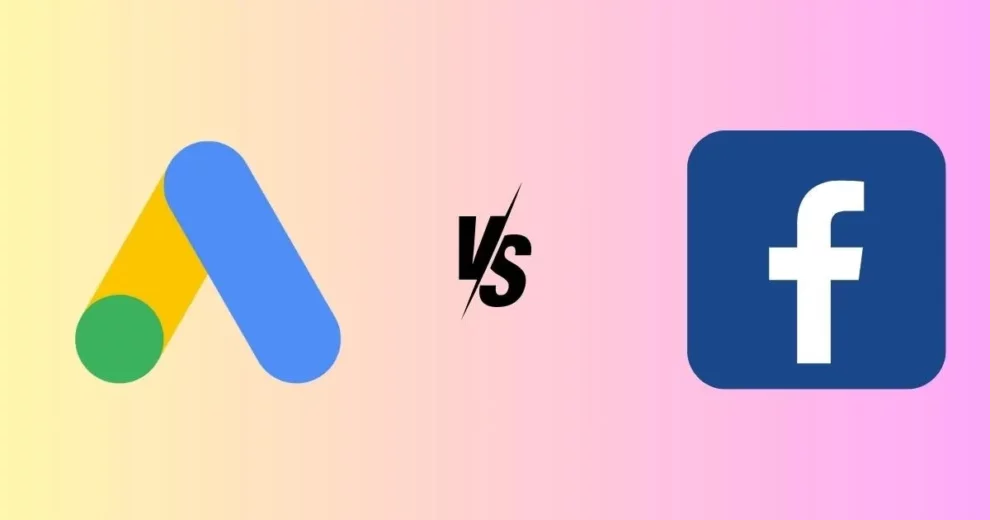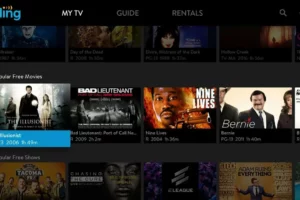Choosing the right platform for your advertising campaigns can make all the difference. Two of the most prominent players in this arena are Google Ads and Facebook Ads. Both platforms offer unparalleled reach and targeting capabilities, but they cater to different audiences and objectives. So, which one should you choose for your business? The answer depends on your goals, target audience, and budget. Let’s dive into the strengths and weaknesses of each platform to help you decide.
Understanding Google Ads: The Search Engine Giant
Google Ads, formerly known as Google AdWords, dominates the online advertising landscape with its pay-per-click (PPC) model. When users search for specific keywords on Google, ads appear at the top of the search results, often above organic listings. These ads are designed to capture attention and drive clicks, leading to conversions.
Strengths of Google Ads
Precision Targeting: Google Ads excels at reaching users actively searching for products or services. By leveraging keyword targeting, businesses can ensure their ads appear only to those who are already interested in their offerings. For example, if you run a bakery, you can target users searching for “birthday cakes near me” or “custom cupcakes.”
High Intent: Because users are actively searching for solutions, the traffic generated through Google Ads tends to have higher intent compared to other channels. This means visitors are more likely to convert into paying customers, whether it’s making a purchase, filling out a form, or subscribing to a newsletter.
Global Reach: With over 90% market share in search engines, Google Ads provides access to a massive audience worldwide. Whether you’re targeting local customers or expanding internationally, Google Ads offers the flexibility to scale your campaigns accordingly.
Measurable Results: Google Ads provides detailed analytics, allowing businesses to track performance metrics like click-through rates (CTR), cost per click (CPC), and conversion rates. This data enables precise optimization, ensuring that your ad spend delivers maximum ROI.
Weaknesses of Google Ads
Competitive Landscape: Due to its popularity, Google Ads attracts intense competition, driving up costs for high-demand keywords. Businesses in saturated industries may struggle to achieve visibility unless they allocate substantial budgets.
Short Attention Span: Search users often skim through results quickly, meaning your ad needs to grab attention immediately. Poorly crafted headlines or descriptions can result in missed opportunities.
Learning Curve: Setting up and optimizing Google Ads campaigns requires technical knowledge, including keyword research, bidding strategies, and ad copywriting. While tools exist to simplify the process, mastering Google Ads demands ongoing effort and experimentation.
Exploring Facebook Ads: The Social Media Powerhouse
Facebook Ads operates within the sprawling ecosystem of Facebook, Instagram, Messenger, and Audience Network. Unlike Google Ads, which targets users based on their search behavior, Facebook Ads focus on demographics, interests, and behaviors. This approach allows advertisers to reach users passively scrolling through their feeds.
Strengths of Facebook Ads
Targeted Audiences: Facebook’s vast user base provides unparalleled opportunities for demographic targeting. You can specify age ranges, genders, locations, job titles, and even hobbies. For instance, if you sell fitness equipment, you can target gym enthusiasts or people following fitness influencers.
Engagement Opportunities: Unlike Google Ads, which interrupt search queries, Facebook Ads blend seamlessly into users’ social feeds. This context creates opportunities for storytelling and brand awareness, allowing businesses to build long-term relationships with their audience.
Creative Flexibility: Facebook Ads support a variety of formats, including image, video, carousel, and Stories ads. This diversity enables businesses to experiment with different creative approaches and find what resonates best with their audience.
Cost-Effective Options: Facebook Ads offer flexible pricing models, including cost-per-click (CPC), cost-per-impression (CPM), and cost-per-action (CPA). Depending on your goals, you can optimize your campaigns for cost efficiency while maintaining quality traffic.
Weaknesses of Facebook Ads
Lower Intent: While Facebook Ads can generate significant reach, the traffic often lacks the same level of intent as Google Ads. Users scrolling through their feeds may not be actively searching for solutions, making conversion rates lower compared to search ads.
Algorithm Complexity: Facebook’s ad algorithms are notoriously complex, requiring constant monitoring and tweaking. Small changes in targeting, budget allocation, or creative assets can drastically affect performance.
Privacy Concerns: As privacy regulations tighten, Facebook’s ability to gather detailed user data is diminishing. This shift may limit the granularity of targeting options in the future, affecting campaign effectiveness.
Choosing Between Google Ads and Facebook Ads
So, which platform is better for your business? The answer depends on several factors:
If You’re Selling Products or Services Directly:
Google Ads is generally the better choice for businesses focused on immediate sales. Its high-intent traffic and measurable results make it ideal for e-commerce, lead generation, and service bookings. For example, a car dealership would benefit greatly from appearing at the top of search results when users search for “used cars for sale.”
If You’re Building Brand Awareness:
Facebook Ads shine when it comes to building brand awareness and fostering long-term relationships. Their ability to engage users through storytelling and immersive visuals makes them perfect for launching new products, hosting events, or promoting lifestyle brands. A luxury spa might use Facebook Ads to showcase its serene environment and attract potential clients.
If You Have a Limited Budget:
Facebook Ads often provide a more cost-effective entry point for small businesses. Their flexible pricing models and broad reach allow startups to test campaigns without breaking the bank. On the other hand, Google Ads’ competitive nature can make it challenging for smaller budgets to compete for visibility.
If You Need Local or International Reach:
Both platforms excel at scaling campaigns globally, but Google Ads offers more straightforward localization options. If you’re targeting specific regions or languages, Google Ads’ geotargeting and language-specific campaigns make it easier to focus your efforts.
Hybrid Approaches: Maximizing Both Platforms
Many businesses opt for a hybrid strategy, leveraging both Google Ads and Facebook Ads to complement each other. For example, you might use Google Ads to capture high-intent traffic and Facebook Ads to nurture leads and build brand awareness. This dual approach ensures that your message reaches users at every stage of the buying journey.
Choosing between Google Ads and Facebook Ads ultimately depends on your business goals, target audience, and available resources. Google Ads shines in its ability to deliver high-intent traffic and measurable results, making it ideal for businesses focused on immediate conversions. Facebook Ads, on the other hand, excel at building brand awareness and engaging users through creative storytelling, making them perfect for long-term growth.
Regardless of which platform you choose, the key to success lies in understanding your audience and continuously optimizing your campaigns. Whether you’re running search ads on Google or social ads on Facebook, staying attuned to user behavior and adapting to changing trends will keep your campaigns fresh and effective. In the end, the best strategy is one that aligns with your unique business needs and maximizes your return on investment.
















Add Comment